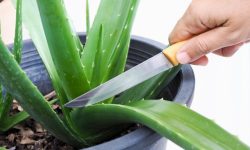Boston ferns are popular for their soft texture and year-round green appearance. However, keeping them vibrant depends heavily on proper watering. Many people assume frequent watering is enough, but Boston ferns react more sensitively than most indoor plants. They dislike dry soil but also struggle when exposed to excess moisture. Understanding the plant’s true water needs prevents problems such as yellowing, leaf drop, or root decline. When you learn the correct watering rhythm, the fern maintains its lush color even when the environment shifts. The key lies in observing how the soil behaves through the day. Once you understand that pattern, the plant becomes much easier to manage.
What makes Boston ferns unique is their fast response to moisture changes. A short period of dryness or overwatering can trigger visible stress. That is why many beginners struggle with their first fern even with careful attention. You must understand how water moves through the soil and how humidity affects evaporation. These elements decide how often the plant needs hydration. This guide gives you complete insight into timing, soil moisture levels, and the signals the fern uses to communicate its needs. Once you master these details, the plant rewards you with thick green fronds and steady growth throughout the year.
Understanding How Often Boston Ferns Need Water

Boston ferns depend on consistent soil moisture, so understanding watering frequency is the core of proper care. The plant thrives when the soil stays evenly damp without reaching a soggy state. You must observe how quickly your soil dries because every home environment behaves differently. Warm rooms speed evaporation while cool rooms slow the process. The goal is to find a rhythm that keeps moisture stable throughout the week. When the soil begins to dry at the top, the plant is ready for more water. This pattern usually develops into a schedule that shifts with temperature and humidity.
The watering frequency also depends on the fern’s growth stage. During active growth, the plant absorbs more moisture and dries the soil faster. Young fronds expand quickly and require steady hydration to stay healthy. In slower seasons, the root system absorbs less water, so the soil remains moist longer. You must adjust the watering interval to match the plant’s seasonal behavior. If you water too often in cool periods, the roots lose oxygen and weaken. If you water too little in warm periods, the fronds suffer dryness and curl. Matching frequency to growth cycles keeps the plant stable.
Environmental factors influence watering needs more than a fixed schedule ever could. Air movement, light exposure, and humidity levels affect how moisture leaves the soil. A fern placed near a window may dry faster than one in a shaded corner. A plant in a humid room needs less frequent watering than one in a dry space. You must check the soil with your fingers rather than relying on a strict routine. This habit helps you understand how often the soil needs water in your specific environment. When you adapt your timing to these conditions, your Boston fern stays green and vibrant all year.
Recognizing the Right Soil Moisture Level Before Watering
Understanding soil moisture is the most reliable way to decide when your Boston fern needs water. The top layer of soil should feel slightly dry before the next watering. This light dryness shows that the plant has used a healthy amount of moisture without becoming stressed. If the surface feels dusty or crumbly, the soil has dried too far and the fern needs water immediately. If the surface still feels damp, you must wait because watering too soon reduces oxygen around the roots. Learning this balance helps you avoid common mistakes that weaken the plant over time. Soil texture changes through the day, so checking it regularly improves your accuracy.
Moisture depth also matters because the top layer dries faster than the lower soil. You must check deeper by pressing your finger slightly below the surface. If the deeper layer feels cool and lightly moist, the fern does not need water yet. A cool sensation shows that the root zone still holds enough moisture to support healthy growth. When the deeper soil feels dry, the plant is ready for hydration. This method prevents the roots from sitting in constant wetness, which causes rot. It also prevents stress from long periods of dryness. Consistent checking teaches you how your soil behaves in different conditions.
The soil’s moisture reaction becomes predictable as you observe patterns in your environment. Warmer conditions cause the soil to dry sooner because evaporation increases. Cooler rooms slow this process and keep moisture in the root zone longer. Humidity also affects how quickly water escapes from the soil. Dry air speeds evaporation while humid air slows it down. When you learn how climate influences moisture, you can anticipate the plant’s needs before stress appears. This awareness makes watering more accurate and keeps the Boston fern green and resilient throughout the year.
How Temperature and Humidity Influence Watering Frequency
Temperature plays a major role in how often your Boston fern needs water because it controls the speed of evaporation. Warm rooms dry soil much faster, which means the fern requires more frequent hydration to stay healthy. High temperatures also increase the plant’s metabolic rate, causing it to draw moisture from the soil more quickly. When the room becomes too warm, the fronds lose water faster than the roots can replace it. You must observe how temperature shifts during the day because these changes influence your watering rhythm. Cooler rooms slow evaporation and reduce the frequency needed for proper hydration.
Humidity levels also shape your watering routine because Boston ferns absorb moisture from the air as well as the soil. High humidity slows the drying process and allows the plant to stay hydrated longer. When humidity is low, the soil dries quickly and the fronds lose moisture through their surface. This dryness increases the risk of browning tips and early wilting. You must raise humidity in dry conditions to prevent the plant from losing water too rapidly. Balanced humidity keeps the soil moist for longer periods and reduces the need for constant watering.
The combination of temperature and humidity determines how long water stays in the soil. Warm, dry rooms create the fastest moisture loss, while cool, humid rooms slow that process. You must adjust your watering schedule to match these changing conditions. A fern placed in a warm location needs more frequent checks than one kept in a cooler space. A plant living near a humidifier needs water less often than one placed near heated air. When you understand how climate affects soil moisture, you can water with confidence. This approach keeps the plant consistent and maintains its green, vibrant appearance through every season.
The Role of Pot Size and Soil Type in Watering Needs
Pot size influences how long moisture stays in the soil, which directly affects your watering routine. A large pot holds more soil, and that soil retains water for a longer period. This slow drying pattern increases the risk of overwatering if you follow a fixed schedule rather than checking moisture levels. A small pot dries faster because it contains less soil, which means the fern needs water more often. You must match the pot size to the plant’s root system to maintain balance. A pot that is too big keeps the soil wet for too long, while a pot that is too small dries out too quickly. Choosing a properly sized pot helps maintain steady hydration.
Soil type also determines how quickly the fern needs water because different mixes hold moisture differently. A dense soil retains water for extended periods and limits airflow to the roots. This heavy texture often causes root stress if watering is not carefully controlled. A light and airy mix drains faster and allows oxygen to reach the roots. This helps prevent moisture buildup but requires more frequent watering to keep the fern hydrated. You must choose a soil blend that balances moisture retention and drainage. This balance ensures the plant receives consistent hydration without the risk of soggy conditions.
The interaction between pot size and soil type decides how stable the moisture level remains. A large pot with dense soil holds more water than the fern can handle. A small pot with a loose mix dries before the plant has enough time to absorb moisture. You must observe how your chosen combination behaves during different seasons. Warm weather dries even dense soil faster, while cool weather slows moisture loss in light blends. When you understand how these factors shape moisture patterns, you can adjust watering properly. This knowledge keeps the Boston fern healthy and prevents common hydration issues throughout the year.
Seasonal Watering Adjustments for Consistent Year-Round Health
Boston ferns change their water needs with every season, so you must adjust your routine to match these shifts. Spring brings warmer days and increased growth, which pushes the plant to absorb more moisture. The soil dries faster, and the fern depends on steady hydration to support new fronds. You must check moisture more often during this period because the plant reacts quickly to any dryness. Summer intensifies these demands as heat speeds evaporation and reduces humidity. Warm air pulls moisture from both the soil and the fronds, forcing the fern to rely on frequent watering. Without timely hydration, fronds lose softness and begin to curl at the edges.
Fall slows the fern’s growth as temperatures begin to drop, which reduces the plant’s water consumption. The soil retains moisture longer, and the fern prefers a gentler watering rhythm. You must observe the soil carefully during this period because overwatering becomes more common. Winter creates the slowest growth phase, which means the plant uses minimal moisture. Heating systems dry indoor air, but the soil still dries slowly because temperatures remain cooler. You must water only when the top layer begins to dry. Extra hydration during winter harms the roots more than dryness does. Adjusting your schedule to match each season keeps the plant stable.
The transition between seasons also affects watering needs, and this period requires close attention. Early spring shifts humidity and temperature quickly, so the soil may dry unevenly. Late summer brings cooler nights that change evaporation rates. Each transition affects how the fern absorbs water and how long moisture stays in the soil. You must test the soil often during these shifts to prevent stress. When you learn to adapt your watering routine to each seasonal pattern, the fern maintains strong color and steady growth. This seasonal awareness helps the plant stay green, hydrated, and vibrant throughout the entire year.
How Light Exposure Changes Your Watering Routine
Light exposure affects how quickly soil moisture evaporates, so it directly shapes how often you must water your Boston fern. Bright light warms the soil and speeds evaporation, which means the plant dries out faster and requires more frequent hydration. A fern placed near a bright window loses moisture more quickly than one kept in softer shade. Direct sun intensifies this effect and can dry the topsoil within hours. You must monitor the soil often when the fern receives strong light. Lower light slows evaporation and helps the soil stay moist for longer periods. This balance allows a calmer watering rhythm and reduces stress on the roots.
Filtered light creates the most stable pattern for long-term watering because it offers brightness without heat. In these conditions, moisture leaves the soil at a moderate pace, giving you time to water at steady intervals. A fern grown in dim areas needs water less often, but the risk of overwatering increases because the soil stays wet longer. Low light reduces the plant’s energy use, which slows moisture absorption. You must check deeper soil levels carefully to avoid watering too soon. The plant shows subtle signs when light levels do not match its needs, such as dull color or slow growth.
Seasonal light changes alter moisture behavior even if you keep the fern in the same spot. Winter brings softer light but lower humidity, which changes how quickly the soil dries. Summer light is stronger and lasts longer, pushing water out of the soil at a faster rate. You must adjust your routine to match these shifts because relying on a fixed schedule leads to mistakes. Observing how light changes through the day helps predict how often the fern needs hydration. When you learn how light controls soil moisture, watering becomes easier and more accurate. This awareness supports a healthy, vibrant plant throughout the year.
Avoiding Overwatering and Underwatering
Overwatering is one of the most common problems for Boston ferns because their roots need both moisture and oxygen to stay healthy. When the soil stays wet for too long, oxygen cannot reach the root system, and the plant begins to decline. Early signs include yellowing fronds, mushy stems, and a sour smell coming from the soil. These symptoms show that the roots are under stress and may already be developing rot. You must let the top layer of soil begin to dry before adding more water. Allowing the root zone to breathe prevents long-term damage and supports recovery.
Underwatering creates a different set of problems that weaken the fern in another way. Dry soil forces the plant to conserve moisture by sacrificing its outer fronds. The tips turn brown, edges curl, and new growth appears thin and fragile. When dryness lasts too long, the fronds lose their softness and turn brittle. You must rehydrate the soil slowly to avoid shocking the roots. Deep watering helps moisture travel through the entire pot and reach the root zone. Repeating this process at proper intervals restores softness and color. Underwatering stresses the plant, but it recovers well when hydration becomes consistent.
Balancing these two extremes requires careful observation and steady habits. The soil should never stay soggy or fully dry. Instead, it must remain gently moist with brief periods of light dryness on the surface. You must adjust your watering based on how the plant reacts rather than following a rigid schedule. Temperature, humidity, pot size, and soil blend all influence how the plant absorbs water. When you respond to these changing conditions, the fern adapts easily and grows stronger. This balanced approach keeps the plant green, vibrant, and resilient throughout all seasons.
The Best Watering Techniques for Deep, Even Hydration
Proper watering technique is just as important as watering frequency because Boston ferns absorb moisture best when water reaches the full depth of the root zone. Pouring water too quickly causes the surface to become wet while the lower soil stays dry. This uneven moisture weakens the roots and creates inconsistent growth. You must water slowly to allow the soil to absorb moisture at a steady pace. Slow hydration ensures that the entire root system receives enough water without flooding the pot. This method also prevents runoff that wastes water and leaves the deeper soil dry.
Deep watering helps maintain strong fronds and encourages new growth. When water reaches the lower roots, the plant develops a stable foundation that supports thick foliage. You must continue adding water until it begins to drain gently from the pot. This drainage shows that the soil has absorbed enough moisture from top to bottom. After watering, allow the pot to drain fully to prevent standing water in the saucer. Trapped water increases the risk of root rot and interrupts natural airflow. Proper drainage keeps the soil balanced and prevents harmful moisture buildup.
Hydration must stay consistent to avoid sudden changes that stress the plant. Boston ferns respond poorly to long periods of dryness followed by heavy watering. This cycle shocks the roots and causes fronds to drop or lose color. Slow, regular watering maintains stable moisture and supports predictable growth. You must check the soil often to determine when another deep watering is needed. This habit helps you understand how quickly your soil dries in different seasons. When you master slow and even watering, the fern maintains vibrant color and healthy structure all year.
How Airflow and Placement Affect Watering Needs
Airflow shapes how quickly soil dries, so it has a direct impact on how often your Boston fern needs water. A plant placed in a room with steady air movement loses moisture faster than one kept in a still, enclosed space. Gentle airflow helps prevent stagnant humidity, but too much movement accelerates evaporation and forces more frequent watering. Drafts from vents, fans, or open windows can dry the soil before the fern can absorb enough moisture. You must observe how air moves through the room during the day because these changes influence your watering rhythm. A balanced airflow helps maintain steady moisture and prevents sudden dryness that stresses the plant.
Placement also determines how the fern reacts to its environment and how quickly the soil dries. A fern near a bright window dries faster because warmth and light increase evaporation. A plant in a shaded corner may stay moist longer, which increases the risk of overwatering if you do not check the soil. Placement near heaters or air conditioners causes unpredictable moisture loss because temperature changes affect evaporation speed. You must choose a spot that offers steady light with no extreme airflow. This stability supports consistent watering and protects the roots from rapid fluctuations.
Environmental microclimates form in different areas of your home, and each location changes how often the plant needs hydration. Rooms with high ceilings dry soil differently than small enclosed rooms. Bathrooms with natural humidity reduce watering frequency, while living rooms with dry air increase it. You must learn how each area behaves before setting a routine. When you understand how airflow and placement influence soil moisture, watering becomes easier and more accurate. This awareness keeps the Boston fern hydrated, stable, and vibrant in every part of your home.
Reading Your Boston Fern’s Signals to Adjust Watering
Boston ferns communicate their watering needs through subtle but clear physical signals. The fronds begin to change texture when the plant lacks hydration. Dryness makes the tips crisp, and the edges lose their natural curve. This stiffness shows that the soil has remained dry for too long. When overwatered, the fronds shift in another direction. They soften too quickly, fade in color, and begin to droop under their own weight. These early changes help you understand what the plant needs before severe stress appears. Observing these patterns each day helps you adjust your watering with accuracy.
Color changes also reveal how the plant responds to moisture levels. Yellow fronds usually point to excess water around the root zone. Brown patches signal dryness that has lasted too long. Pale green fronds may appear when the plant receives enough water but lacks the right balance of light and humidity. Texture and color shift together when the plant attempts to protect itself from stress. You must check the soil whenever you see these signs because they often reflect deeper issues. Adjusting hydration at the right moment prevents long-term damage.
Growth patterns also help you understand watering needs. When the fern receives the right amount of moisture, new fronds appear regularly and develop smooth, soft textures. Slow or twisted growth shows that the plant is struggling with inconsistent watering. You must respond by adjusting your schedule and checking moisture more often. The plant stabilizes quickly when conditions return to normal. Learning to read these signals makes watering far easier because the fern shows you what it needs. This awareness helps you keep the plant strong, hydrated, and vibrant throughout every season.
Choosing the Right Water Quality for Healthy Growth
Water quality affects how well your Boston fern absorbs moisture and nutrients, so choosing the right type of water is essential for long-term health. Tap water often contains minerals that build up in the soil over time. These minerals create white residue on the surface and may cause frond tips to brown. Chlorine and other treatments in tap water also stress the roots when used too often. If your fern reacts negatively to regular tap water, the soil may be holding minerals that block proper hydration. You must observe how the plant responds after each watering to determine if water quality is affecting growth.
Filtered or distilled water creates a gentler environment because it contains fewer minerals. This cleaner quality prevents buildup around the roots and allows the soil to drain more effectively. If you use filtered water consistently, the plant maintains softer fronds with healthier color. Rainwater is also a strong choice because its natural balance supports hydration without added chemicals. You must gather and store rainwater properly to keep it safe for indoor plants. Using pure water helps the fern recover from mineral stress and encourages stronger new growth.
Water temperature also affects how the plant reacts. Cold water shocks the roots and slows absorption, while hot water damages delicate tissues. You must use room-temperature water to ensure gentle hydration. This steady temperature prevents sudden stress and supports stable moisture levels throughout the pot. Over time, choosing the right water and using it properly improves the fern’s resilience. The plant shows healthier growth, deeper color, and better resistance to moisture-related problems. When you combine good water quality with consistent care, your Boston fern stays green and vibrant through every season.
The Best Tools and Techniques to Measure Soil Moisture
Measuring soil moisture accurately helps you understand exactly when your Boston fern needs water. Your fingers remain one of the most reliable tools because they help you feel the soil’s texture and temperature. By pressing slightly below the surface, you can sense whether the soil is cool and moist or dry and warm. This simple method gives immediate feedback because the soil changes texture as it loses moisture. It also helps you understand how different areas of the pot dry at different speeds. Manual checking is quick, precise, and effective for daily monitoring. It teaches you how your specific environment affects moisture levels.
Moisture meters provide another helpful tool for long-term accuracy. These devices reach deeper into the soil and reveal moisture levels that your fingers cannot detect. A moisture meter shows if the lower soil has dried even when the top layer still feels damp. This prevents accidental underwatering or overwatering caused by surface-level checks. You must use the meter in several spots around the pot to get a complete reading. Consistent measurements help you learn the drying pattern of your soil mix. Over time, the meter helps you predict when watering will be needed.
Weight observation also helps you judge soil moisture. A pot filled with wet soil feels heavier than one that has begun to dry. By lifting the pot regularly, you understand the weight difference and learn when hydration is needed. This method is useful for hanging ferns because they dry faster due to increased airflow. When you combine touch, tools, and weight checks, your watering routine becomes far more accurate. These techniques help prevent moisture mistakes and support stable hydration. Accurate measurement keeps your Boston fern healthy, balanced, and vibrant throughout the year.
FAQs How Often to Water Boston Fern
How can I tell when my Boston fern needs water?
You can tell your Boston fern needs water when the top layer of soil feels lightly dry and the fronds begin to lose their soft texture. Checking deeper soil helps confirm whether moisture has fully dropped. When both layers feel dry, the plant is ready for thorough watering.
Why do my Boston fern’s fronds turn yellow after watering?
Fronds often turn yellow when the roots sit in oversaturated soil for too long. Excess water removes oxygen from the root zone, causing stress that affects color and texture. Allowing the top layer to dry slightly between waterings helps keep the balance and prevents long-term root damage.
Does my Boston fern need more water in summer?
Your fern usually needs more frequent watering in summer because heat increases evaporation and reduces humidity. Warm air pulls moisture from the soil faster, making the plant rely on steady hydration. Checking the soil more often during hot periods helps prevent dryness and supports healthier seasonal growth.
Can I use tap water for my Boston fern?
You can use tap water, but minerals and chlorine sometimes cause browning tips or slow growth. If the fern reacts poorly, switching to filtered or distilled water helps reduce stress. Cleaner water prevents mineral buildup in the soil and supports smoother moisture absorption through the entire root system.
How long should I wait between waterings?
There is no universal waiting time because moisture loss depends on temperature, light, airflow, humidity, and soil type. Instead of following a strict schedule, check the soil regularly to understand how fast it dries. When the surface becomes slightly dry, it is usually the right moment to water again.
Conclusion
Watering a Boston fern becomes effortless once you understand how moisture, light, temperature, and humidity work together. The plant thrives when its soil stays gently moist and its environment remains steady. By observing small changes in texture, color, and growth, you can adjust your watering routine with confidence. When moisture stays balanced, the fern responds with soft fronds, rich color, and steady year-round growth. With patience and simple daily awareness, you can maintain a rhythm that keeps the plant healthy in every season. A well-watered Boston fern becomes a calming, vibrant presence that brightens any space.






